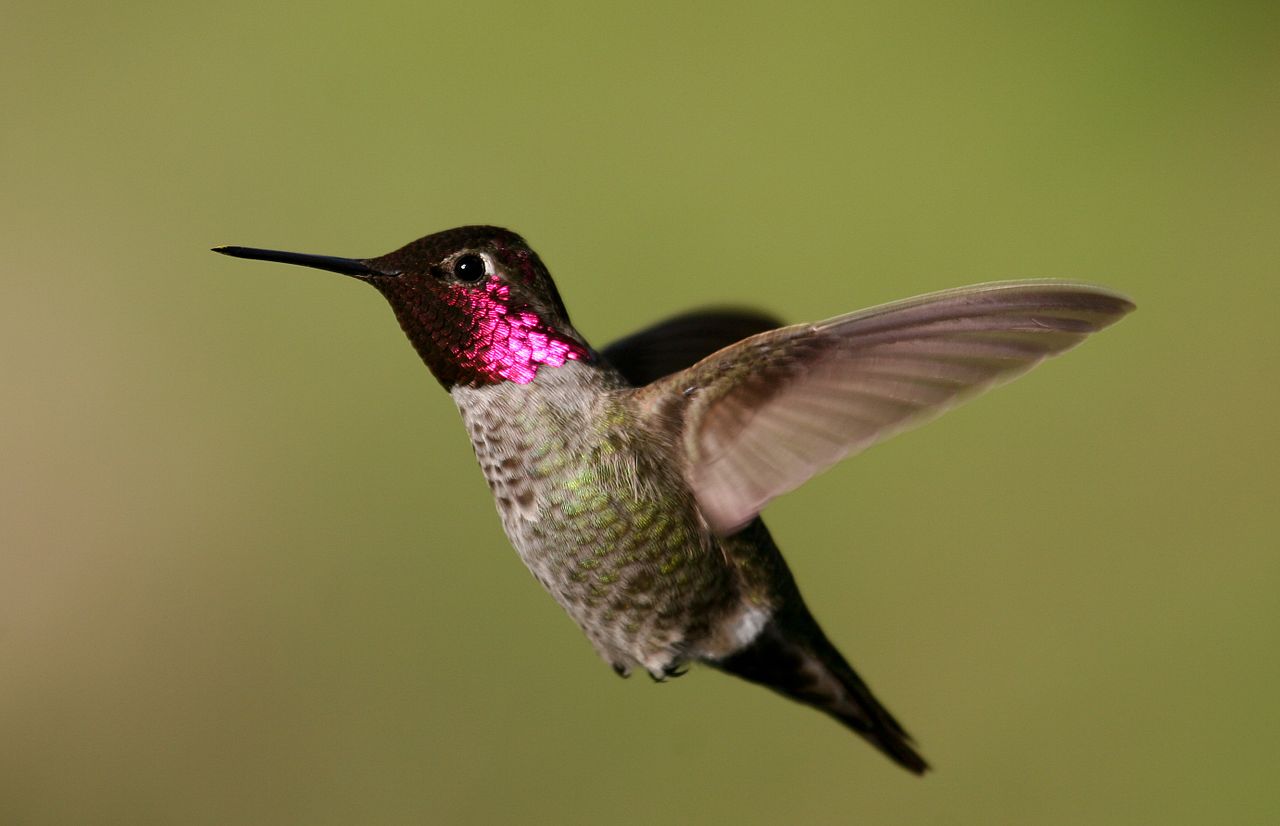
Bird Science - Anna's Hummingbird
Share
 Anna's Hummingbird: A Vibrant and Adaptable Species
Anna's Hummingbird: A Vibrant and Adaptable Species
Anna's Hummingbird (Calypte anna) is a striking North American hummingbird species named after Anna Masséna, Duchess of Rivoli. Native to the western coastal regions of North America, this species has expanded its range significantly over the past century, adapting to urban environments and milder climates.

Physical Characteristics
Anna's Hummingbirds are medium-sized, measuring 3.9 to 4.3 inches in length with a wingspan of 4.7 inches and weighing between 0.1 to 0.2 ounces. They have an iridescent bronze-green back, pale grey chest and belly, and green flanks. Males are distinguished by their iridescent crimson-red crown and gorget, which can appear dull brown without direct sunlight. Females have a duller green crown, grey throat with occasional red iridescence, and a dark, rounded tail with white tips on the outer feathers.

Distribution and Habitat
Anna's Hummingbirds are found along the western coast of North America, from southern Canada to northern Baja California, and inland to parts of Arizona, Nevada, Utah, and Texas. Historically, they migrated from northern regions to breed in California, but since the 1970s, they have expanded their breeding range northward due to the availability of ornamental plants, nectar feeders, and milder winter temperatures. This expansion is an example of ecological release, allowing them to thrive in areas like the Pacific Northwest year-round.
Feeding Behavior
These birds feed primarily on nectar from flowers using their long, extendable tongues. They also consume small insects and other arthropods, often caught in flight or gleaned from vegetation. Anna's Hummingbirds are known to assist in plant pollination, with evidence suggesting that they transfer pollen grains to hundreds of flowers per day while foraging.

Breeding and Reproduction
Anna's Hummingbirds breed in open woodlands, shrubby areas, and mountain meadows along the Pacific coast. Females build nests alone, constructing them from plant fibers, downy feathers, and animal hair, and camouflaging them with lichen and plant debris. The nests are typically built in shrubs, trees, vines, or even on artificial substrates like wires. Females raise the young without assistance from males, and breeding can occur from mid-December to June, depending on location and climate.
Adaptations and Survival
Anna's Hummingbirds have adapted to urban environments and can be found in backyards, parks, and gardens. They are known for their ability to enter torpor during cold weather, lowering their metabolic rate to survive subfreezing temperatures. This adaptation, along with the availability of nectar feeders and introduced plants, has allowed them to expand their range into cooler climates.

Conservation Status
Anna's Hummingbirds are listed as "Least Concern" on the IUCN Red List, with an estimated population of 8 million individuals in the western United States and Canada. Their population has been increasing since 1970, thanks to their adaptability and the expansion of suitable habitats.
